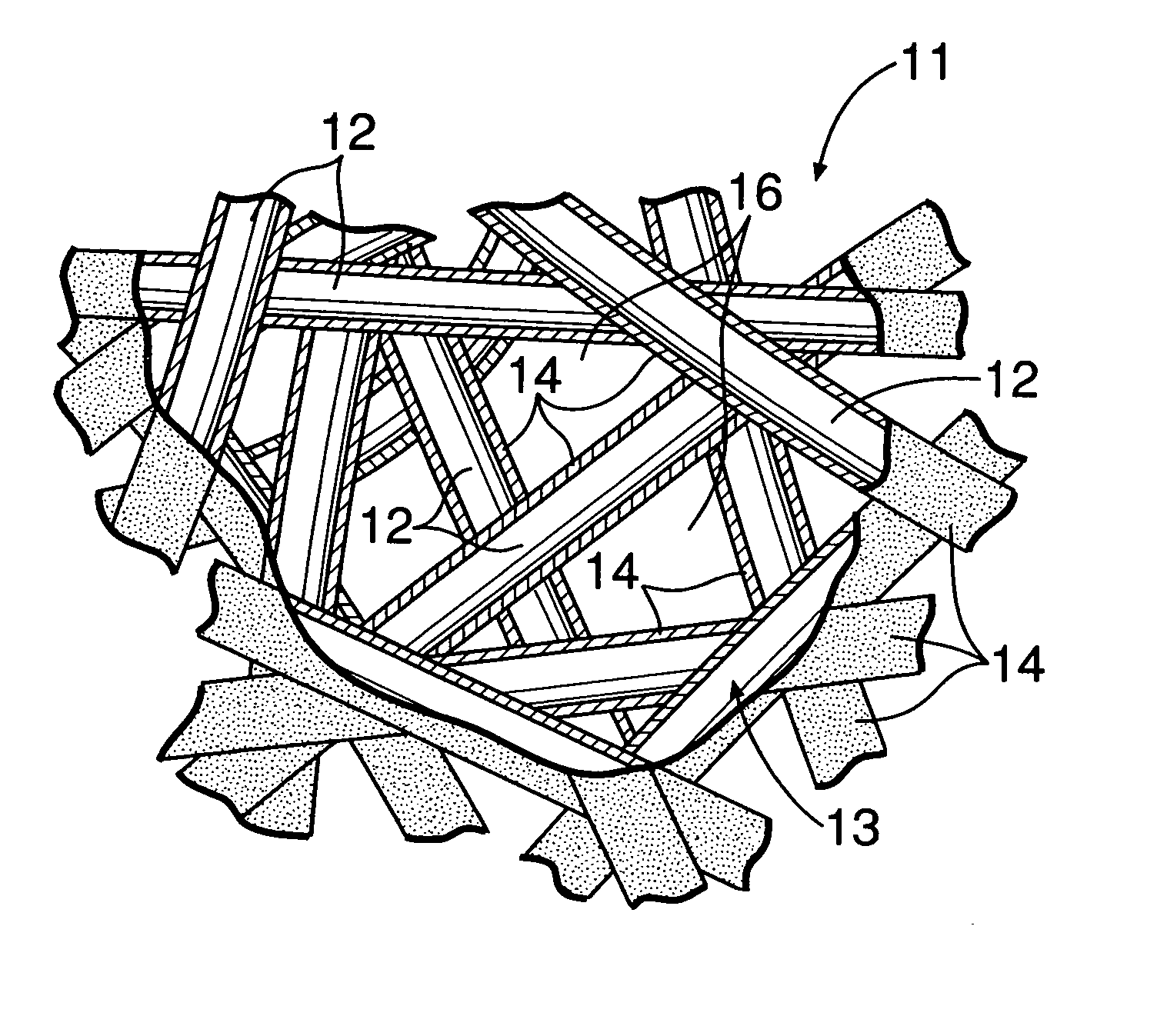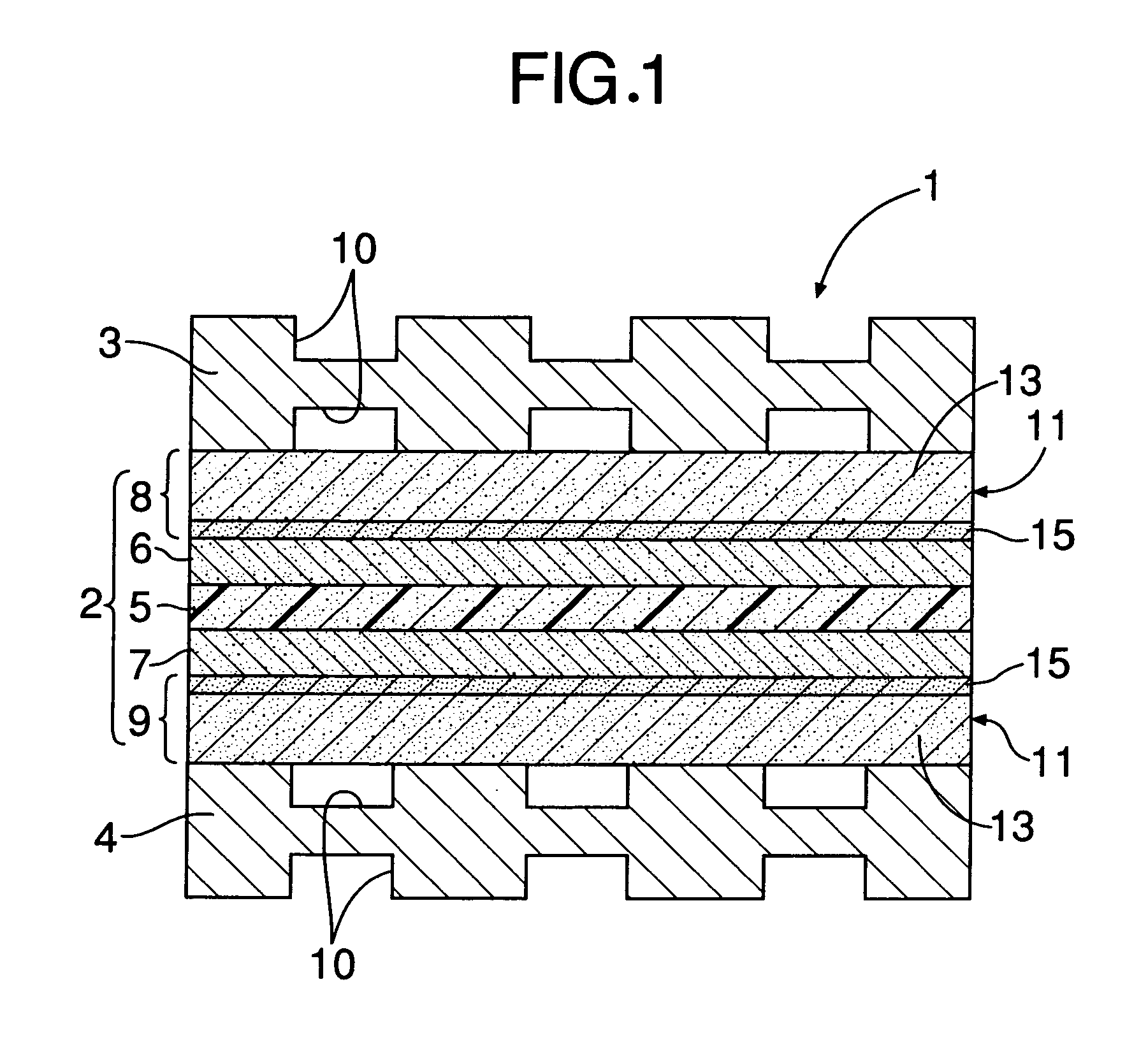Fuel cell
a fuel cell and fuel cell technology, applied in the field of fuel cells, can solve the problems of exposing the electrolyte to damage from the gas-diffusion layer, difficult to control the surface pressure involving contact resistance reduction, and low strength of carbon paper surface pressure resistan
- Summary
- Abstract
- Description
- Claims
- Application Information
AI Technical Summary
Benefits of technology
Problems solved by technology
Method used
Image
Examples
Embodiment Construction
[0027] Referring to FIG. 1, a polymer electrolyte fuel cell 1, according to a preferred embodiment of the present invention, includes a laminated plate-shaped membrane electrode assembly 2 and an upper first separator plate 3 and a lower second separator plate 4 sandwiching the membrane electrode assembly 2 therebetween. The membrane electrode assembly 2 includes a polymer electrolyte membrane (electrolyte) 5; an upper first electrode layer 6 and a lower second electrode layer 7 sandwiching the polymer electrolyte membrane 5 therebetween; and an upper first gas-diffusion layer 8 and a lower second gas-diffusion layer 9 disposed on the outer sides of electrode layers 6 and 7, respectively, that do not sandwich the electrolyte membrane 5. The polymer electrolyte membrane 5 is made of, for example, Nafion® (manufactured by DuPont) which is a fluorocarbon resin ion exchange membrane. Each of the first electrode layer (e.g., an anode) 6 and the second electrode layer (e.g., a cathode) 7 ...
PUM
 Login to View More
Login to View More Abstract
Description
Claims
Application Information
 Login to View More
Login to View More - R&D
- Intellectual Property
- Life Sciences
- Materials
- Tech Scout
- Unparalleled Data Quality
- Higher Quality Content
- 60% Fewer Hallucinations
Browse by: Latest US Patents, China's latest patents, Technical Efficacy Thesaurus, Application Domain, Technology Topic, Popular Technical Reports.
© 2025 PatSnap. All rights reserved.Legal|Privacy policy|Modern Slavery Act Transparency Statement|Sitemap|About US| Contact US: help@patsnap.com



